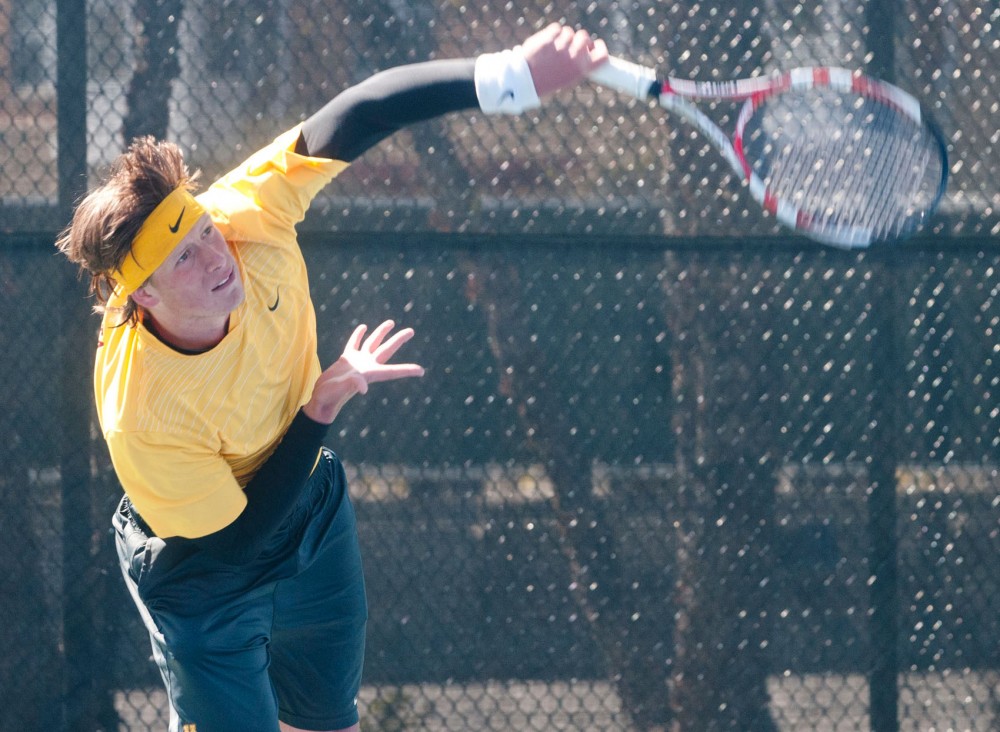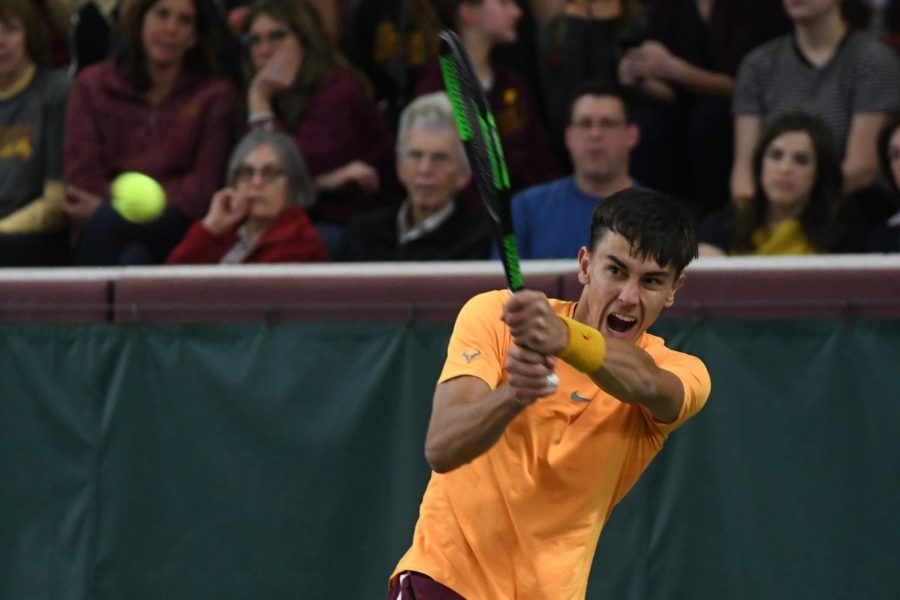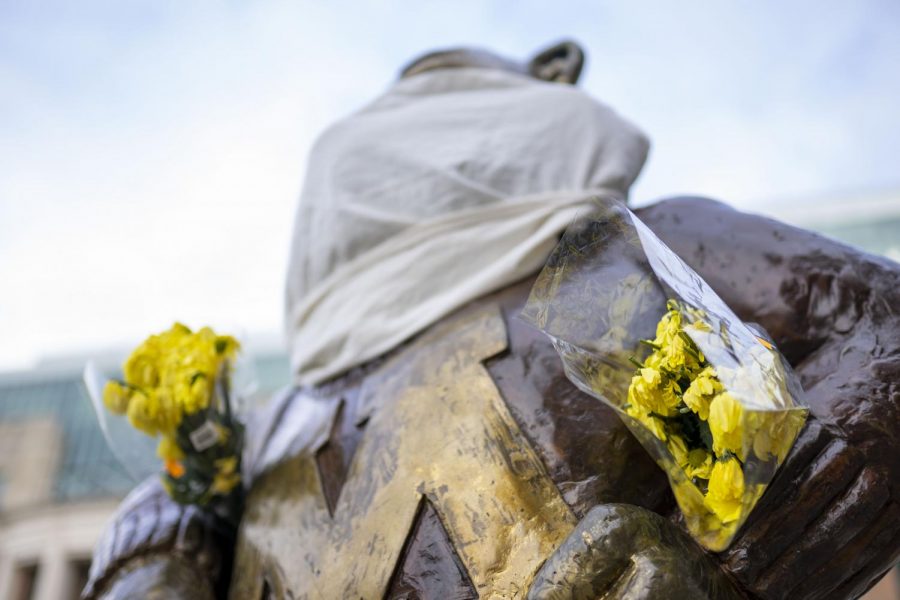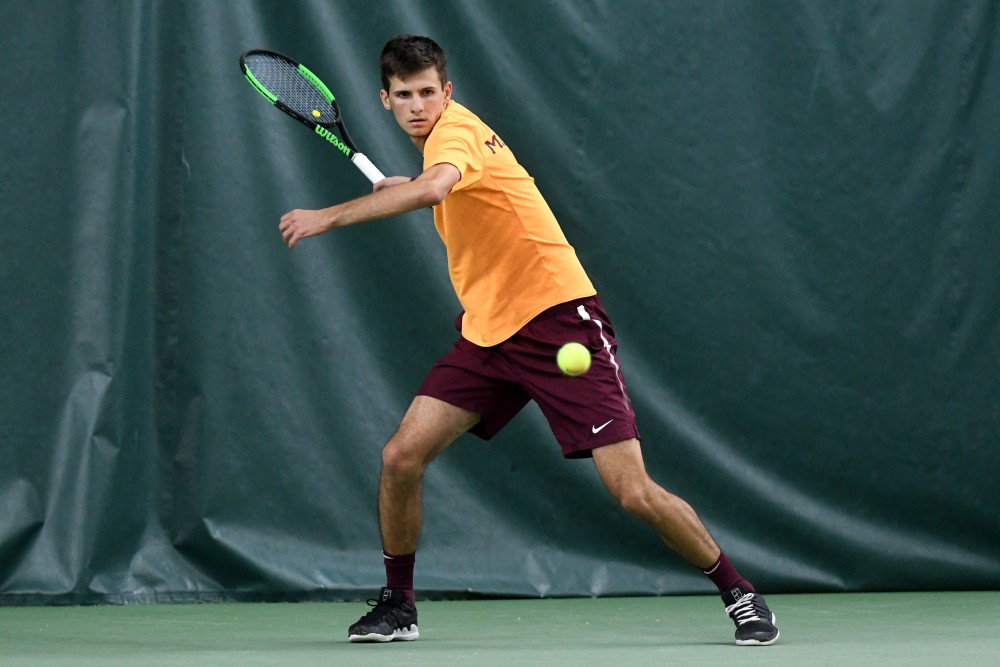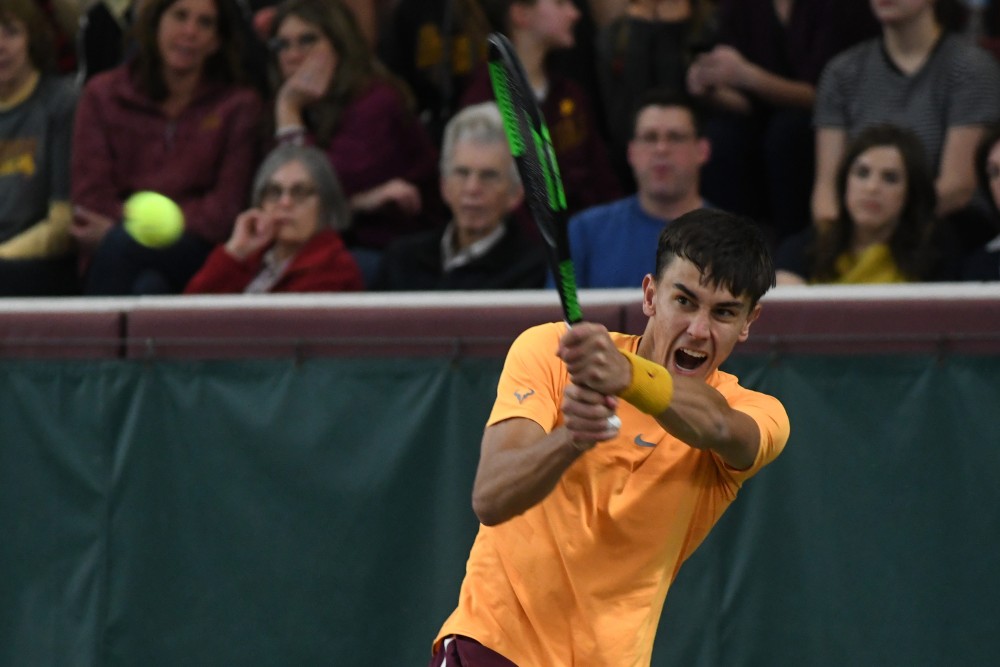Leandro Toledo is calm, quiet and aggressive on the tennis court.
The 6-foot-1-inch freshman from Hamburg, Germany, doesn’t display the same emotion as his Gophers teammates. Rather than yelling after winning a big point, Toledo opts for a subdued fist pump or, if the point is especially big, a short rally cry — “Let’s go!”
Results tell a different story. In terms of success, Toledo has made more noise than any of his teammates.
He is the Gophers’ top player in national ranking (No. 78) and record (21-7) this season despite playing mostly at the second singles position. He has upset four top-35 players and led Minnesota to a 9-6 record.
There’s no secret to Toledo’s winning ways. He knows it and his opponents know it: He likes to play big.
Known in tennis terms as an “aggressive baseliner,” Toledo dictates points from the baseline with pinpoint serves, punishing returns and powerful ground strokes.
“He hits a very hard ball,” head coach Geoff Young said. “It doesn’t matter who he’s playing — he’s capable of hitting winners or near-winners against anyone.”
Young said he’s capable of beating anyone too — and last Sunday, he nearly pulled off the Gophers’ biggest upset of the season.
Playing while ill, Toledo won the first set against then-No. 12 Chase Buchanan of Ohio State before falling in three sets. He broke Buchanan’s serve twice in the opening set while holding each of his own service games.
Toledo finished the match with more than twice as many winners as Buchanan. But he also had more than six times as many unforced errors.
“At times, it can be a lot of errors,” Young said. “Because he goes for so much, there’s going to be times where he misses more than others. That’s natural, but it’s how he chooses to deal with those moments that can determine whether he can climb out of that.”
When the match isn’t going well, Toledo gives himself two options — stay aggressive or back off and try to out-rally his opponent. The latter is a “last option,” he says, because ideally, he’s aggressive at all times.
This weekend was a prime example. Toledo won the first set and lost the second set of both of his matches, but he kept going for his shots.
On Friday, he fought Penn State’s Russell Bader to a 4-4 standstill in the third set. Then Toledo turned up the heat, winning eight of the next nine points — four on winners — to claim the match.
The aggressive return
When Novak Djokovic took the professional tennis world by storm in 2011, he did it by reviving one of the game’s lost arts — the aggressive return of serve.
Weeks after joining the Gophers last fall, Toledo did much the same.
Last September, during the fall season, Toledo lost 6-2, 6-4 to then-third-ranked Eric Quigley of Kentucky. Toledo said Quigley was able to control the match by attacking Toledo’s normally commanding serve.
After the match, Young told Toledo to model his return of serve after Quigley’s.
“Geoff said, ‘Look at his play. If you can develop that play, you can improve your game and put your opponents under pressure,’” Toledo said. “After that, I kind of started developing [aggressive returns]. Throughout the next matches, it really helped me in beating tough guys.”
Toledo won 10 of his next 12 matches, upsetting the nation’s Nos. 28, 29 and 30 players, to close out the fall season.
He said that before he spoke with Young, he had never thought to attack serves. Now it’s made his approach much simpler.
“I basically know that I can break [my opponent’s serve] at least once in a match,” he said, “I think that helps me a lot … so I can be more aggressive and confident in my shots.”
Tennis players who play too aggressively are often criticized for their high total of unforced errors.
But when returning serves, players are considered at a disadvantage — making the aggressive return a potential high-reward play with little added risk.
“It’s kind of underrated,” Toledo said about the return of serve. “People [aren’t] aggressive on that.”
Unlike most players, Toledo stands close to the baseline when returning first serves. When the ball enters his hitting zone, he takes it on the rise and directs it to one of the corners or at his opponent’s feet. If the return goes in, he’s almost sure to take an early advantage in the point.
“He’s basically in control of the point right away,” said Toledo’s doubles partner, Juan Pablo Ramirez. “Some players like [No. 1 singles player] Rok [Bonin] might just go back a little, put the ball in and then start the point. I think [Toledo] makes a huge difference.”
In men’s tennis, a player wins about three-quarters of his service games against an evenly matched opponent. When playing at his best, Toledo wins all of his service games and one of his opponent’s service games to claim the set — a simple, confident approach employed by many top professional players.
“If you can hold serve with anyone, then you’re just playing for one break,” Young said. “That’s just a big strength and a big advantage in tennis.”
Toledo’s strong serves and returns work especially well in doubles. There, players must place serves strategically to set up their partner for an easy volley, and returns must be hit with pace and directed cross-court, beyond the opposing net player’s reach.
Toledo and Ramirez won their first 10 doubles matches together this spring before losing to Ohio State on Sunday.
As a team, the Gophers lost six of seven matches to the then-third-ranked Buckeyes — a good result considering Minnesota lost 25 consecutive individual matches to Ohio State prior to that.
It’s a testament to how far the Gophers have come — and how far they have to go.
But with so much already accomplished, Toledo may be a step ahead of his teammates. And he’s got three more years to solidify his spot among the nation’s elite.








